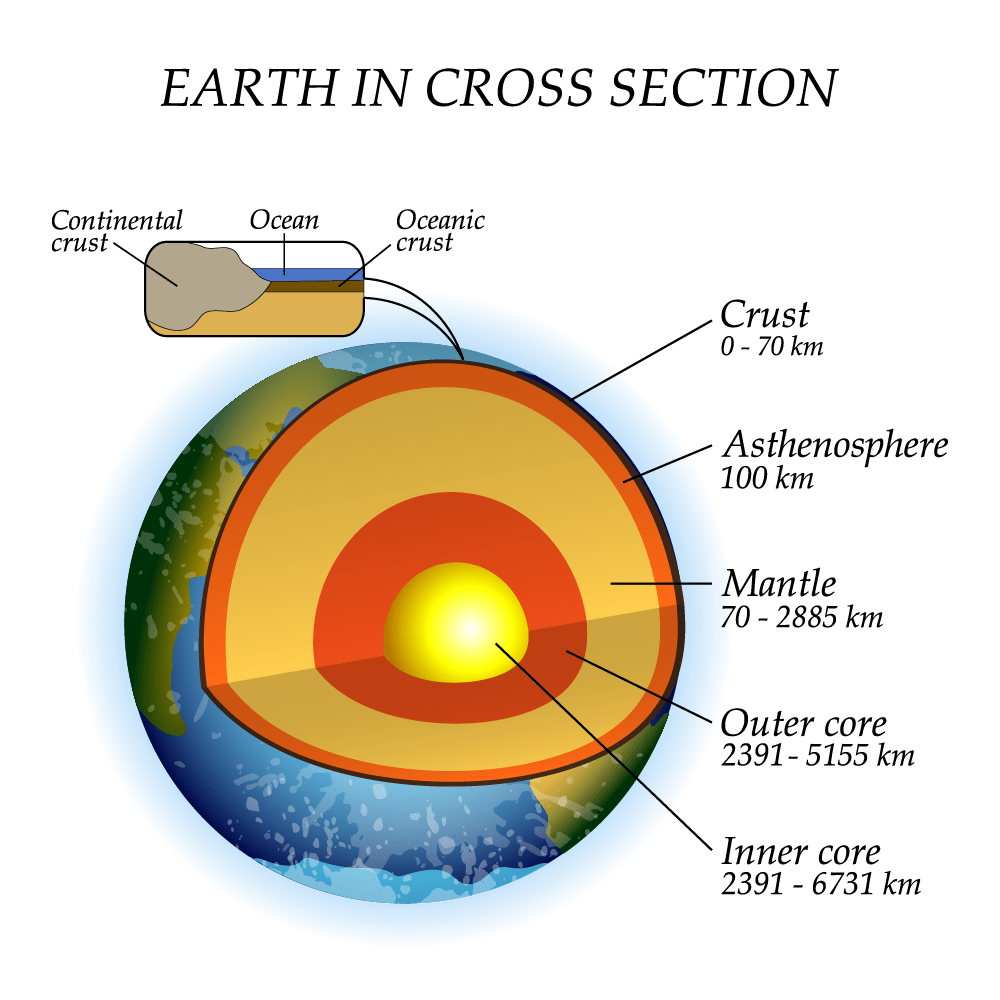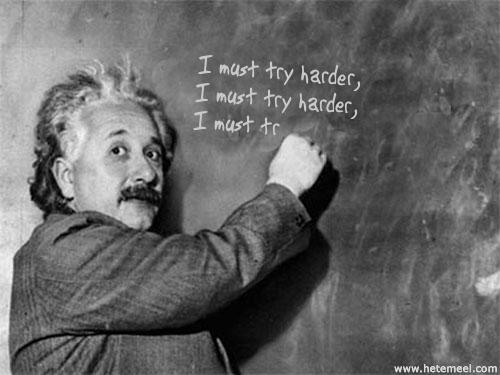What is the structure of the Earth?
To understand plate tectonics, we must start by understanding the structure of the Earth.
The Earth has a series of distinct layers:
- Inner Core: The innermost part of the Earth is its inner core. It’s solid, consisting primarily of iron and nickel, and is incredibly hot, with temperatures soaring up to around 5500°C. This heat is due to the decay of radioactive particles and the immense pressure at such depth.
- Outer Core: Enveloping the inner core is the outer core. Also rich in iron and nickel, this layer is different as it exists in a liquid state. The movement within this liquid layer generates Earth’s magnetic field.
- Mantle: Positioned above the outer core, the mantle is largely solid but behaves like a viscous fluid over long periods. The upper part of the mantle called the asthenosphere, is softer and can deform, similar to a soft plastic.
- Crust: Earth’s outer shell is the crust, which is relatively thin compared to the deeper layers. It averages between 15 km to 20 km in thickness, though this can vary. The lithosphere is a rigid layer consisting of the crust and the very top part of the mantle. This lithosphere is fragmented into massive pieces known as tectonic plates. These plates aren’t static; they move.
When discussing tectonic plates, there are some key distinctions:
- Oceanic crust: Primarily found beneath the oceans, the crust has an average thickness of about 5km. Oceanic crust is denser than continental crust and is mainly composed of basalt.
- Continental crust: This crust is considerably thicker, sometimes reaching depths of up to 60km. Continental crust is mainly made up of granitic rock, which is less dense than the basalt found in oceanic crust. Another point of interest is that the continental crust is much older geologically than oceanic crust.
Some tectonic plates possess both oceanic and continental crust. Due to the differences in density, when plates consisting of oceanic and continental crust converge, the denser oceanic plate often gets pushed beneath the continental plate, a process known as subduction.
Summary
Flashcards
Check Your Knowledge
Quiz
True or false? The inner core is solid. Surrounding the inner core is the outer core, then the mantle, which is covered by the Earth’s ‘skin’ or crust.
Correct!
Wrong!
What are the characteristics of the Earth's inner core?
Correct!
Wrong!
What are the characteristics of the Earth's outer core?
Correct!
Wrong!
What are the characteristics of the Earth's mantle?
Correct!
Wrong!
Which type of crust has the following characteristics? - Thin, 5-10km thick - Dense - Formed from basaltic rock - Recycled at destructive margins - Young, usually less than 200 million years old
Correct!
Wrong!
Which type of crust has the following characteristics? - Thick, 20-200km - Less dense - Made up mainly of granite - Old, up to 3.8 billion years old
Correct!
Wrong!
What is the name of the upper portion of the mantle which is a weak layer which can deform like plastic?
Correct!
Wrong!
What is another name for the Earth's crust?
Correct!
Wrong!
Look at the diagram. Is it labelled correctly?

Correct!
Wrong!
What is the name for hot, liquid rock below the Earth's surface?
Correct!
Wrong!
The Structure of the Earth Quiz
Boom! Well done!

Awesome, well done! You know the structure of the Earth!
Not bad at all...

As Thor says, not bad at all. But, let's be honest, it's not yet brilliant. Give the quiz another go and don't forget to read up on this area by heading over to our tectonics resources using the topics link at the top of the page.
Must try harder!

You need to do some work on the structure of the Earth. Take a look at our resources under Topics in the menu at the top of the page.
Share your Results:
